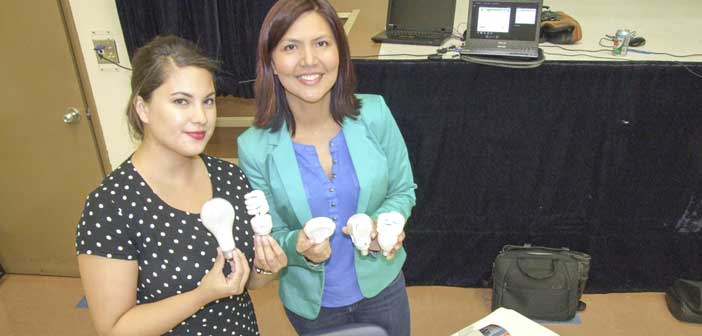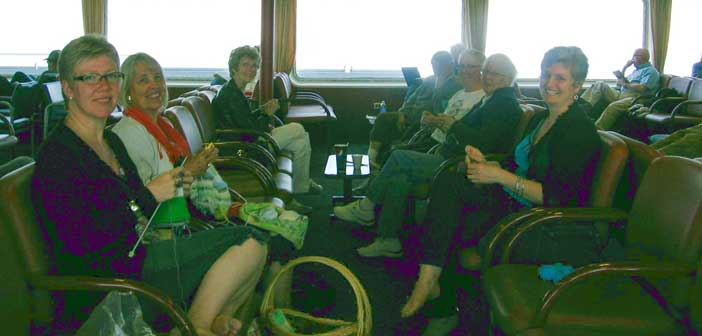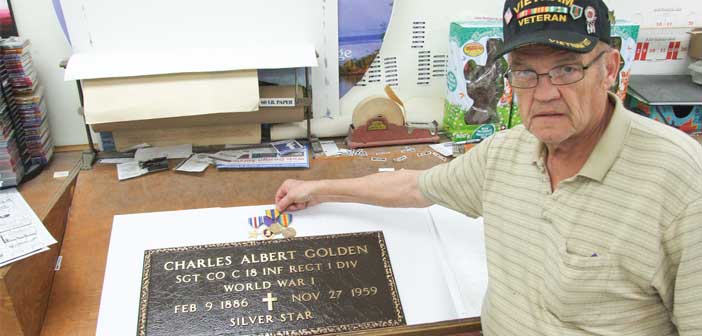BIRCH ISLAND—The Whitefish River First Nation community is taking a pro-active approach to tackling energy bills through the most effective means possible—conservation. The Aboriginal Conservation Program (ACP) recently held an information session at the Whitefish River First Nation community hall, bringing tips on energy saving strategies and programs that community members can access to lessen the sticker shock on their monthly hydro bills.
““I think this is something that we, as a community, need to look into more,” said Chief Shining Turtle (Franklin Paibomsai). “These days, if you aren’t prepared to personally take charge of your energy consumption, you had better have a lot of extra slack in your household budget—who among us has that?”
Chief Shining Turtle noted that many of us tend to do the things the way we always have, but over the years things have changed.
“Remember when we were kids and you would push the button on the television and you heard that snap as the power shut off? The glow of the tubes inside would slowly dim and then it was completely off,” he said. “Well now when you turn your television off, it is really still on and sucking power—a lot of power.”
That sneaky proclivity of modern appliances to consume electricity even when they are supposedly ‘off’ is called phantom power and learning about how to deal with phantom power was just one of the strategies shared by ACP workshop facilitators Clara Robinson and Whitney Hill, who had travelled up from their Six Nations home base. Ms. Robinson is familiar to many CBC listeners, as she is a former news anchor.
“This is the first rural community we are visiting,” said Ms. Robinson, noting that the ACP program will be travelling to 17 First Nation communities. “We are hoping to have the program up and running in each of those 17 communities by January 1, 2015.”
Ms. Robinson explained that the ACP is an “energy conservation program designed to help homeowners, tenants and businesses in First Nations and urban aboriginal communities conserve electricity and to manage their energy costs.”
The best part about ACP is that not only does it help save energy costs, but also the program itself is free. “There is no cost to the First Nation or community members,” she said. “For the residential portion of the program, it is geared to income and the participants must apply and qualify.”
Businesses and band-owned/operated facilities that participate receive an assessment of their lighting and water heating equipment. “Based on that assessment they can receive between $300 and $1,500 worth of energy efficient lighting and water heating upgrades free of charge, installed by an approved electrical contractor,” she said. “To apply as a tenant or homeowner, you will need to have your landlord or building manager sign a Building Owner Consent form.”
Those eligible for the program include those who own or are a tenant in residential housing on-reserve and if your annual household income fits into an eligible category or if you have received (over the past 12 months) the National Child Benefit Supplement, Guaranteed Income Supplement, Allowance for Seniors, Ontario Works or the Ontario Disability Support Program or if you have received the Untility Low Income Energy Assistance Program grant in the past 12 months.
The low-income cutoff for a one-person household is $31,923 and $39,744 for a two-person household.
Basic measures in the ACP include: energy-saving light bulbs, a low-flow showerhead, faucet aerators, hot water tank wrap pipe insulation, a smart power bar and a block heater timer.
Extended measures can include replacement of working (but older) inefficient appliances with Energy Star rated appliances of the same size, including refrigerators, chest freezers, window air conditioners and dehumidifiers and programmable wall-mounted thermostats (in electrically heated homes with wall mounted thermostats only).
Homes that are electrically heated are eligible for “weatherization” measures such as insulation of basement, crawl spaces and attics as well as caulking around windows, doors and attic hatches to help ‘draft proof’ the home.
In addition to providing information and assistance with signing up for the ACP, Ms. Robinson and Ms. Hill had a wealth of information and tips for energy conservation, delivered through fun games with plenty of prizes. The payoff from implementing these measures can be quite dramatic. “One person we did in Pic River saw a $60 drop in their electricity bill,” said Ms. Robinson, “and that was without doing very much.”
The payoff for the electrical grid from the ACP is nothing to sneeze at. If the ACP meets its goal of signing up 800 homes, notes Ms. Robinson, “projected annual savings will be in the neighbourhood of three to four million kilowatts saved for the 11 communities.”
An Energy Star efficient electric furnace can be up to 70 percent more efficient than an older model, and the simple expedient of lowering the thermostat at home can make a huge difference. “We do that at home ourselves,” said Chief Shining Turtle, although in his case the savings are seen in lower oil consumption. “We consistently use about a tank and a half of fuel a year.”
“Warm yourself, not your surroundings,” agrees Ms. Robinson. “Wear socks, moccasins and keep some warm blankets and sweaters handy.” A couple of degrees lower on the thermostat pay huge dividends in the heating bill.
“You get used to it very quickly,” adds Chief Shining Turtle.
Lighting can make up 17 percent of your electricity bill at the end of the month, so dad was right to yell “turn off the light.” The old urban myth that it costs more to start up a light bulb than to run it needs to be well and thoroughly put to bed.
To deal with phantom power issues (many electronics draw power even when they are off) unplug the unit or use a power bar with a timer to cut the flow of electricity when the electronics are idle.
Washing clothes in cold water makes a huge difference as well. “Eighty-five to 90 percent of the electricity used by washing machines is used for heating the water,” notes Ms. Robinson. “If you can, wash your laundry in cold water.” When choosing a washing machine, remember that front loading units wring more water out and shorten the drying time. If you have to use a dryer, do full loads and try and dry one load after another, while the unit is still hot. Clean the lint filter after every load—you can even toss in a dry towel to absorb some of the moisture.
The ACP program is a collaboration between the ABOR Group, First Nations Engineering Services Ltd. And the Ontario Power Authority.
More information about the ACP can be found by calling the ACP toll free line at 855-445-0202 or by email at aboriginalconservation@powerauthority.on.ca.





